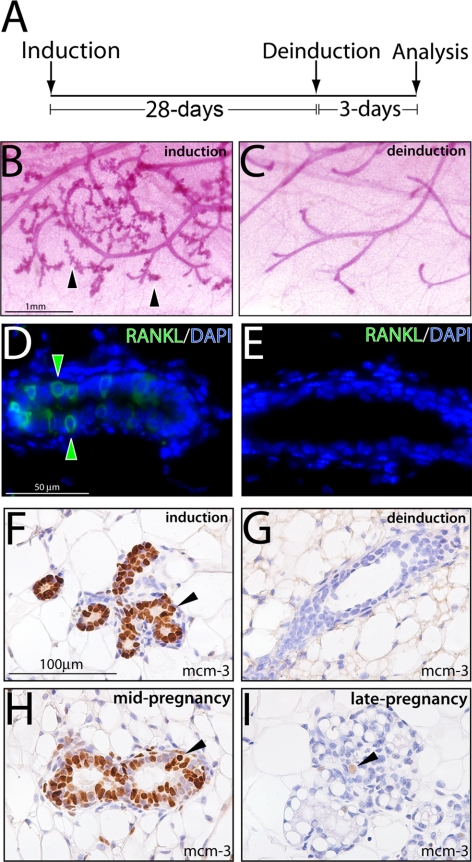Figure 8.
Mammary ductal side-branching and alveolar development requires continued RANKL expression. A) Schematic of the 28-d doxycycline-induction and 3-d deinduction protocol applied to adult PRrtTA/rtTA/TetO-RANKL bigenic mice prior to mammary gland whole-mount and immunohistochemical analysis. B) Typical whole mount of a mammary gland biopsied from the PRrtTA/rtTA/TetO-RANKL mouse following 28 d of doxycycline treatment. Note the presence of ductal side-branches and alveoli (arrowheads). C) Typical whole mount of the remaining mammary gland from the PRrtTA/rtTA/TetO-RANKL mouse administered doxycycline for 28 d followed by 3 d without doxycycline in the food and water (deinduction). Note the precipitous loss of ductal side-branching and alveolar budding following doxycycline withdrawal. D) Immunofluorescence detection of mammary RANKL (green arrowheads; merged with DAPI) following 28 d of doxycycline induction. E) Absence of RANKL expression following 3 d of doxycycline withdrawal. F) Significant mcm-3 expression in the mammary epithelium following 28 d of RANKL induction in the PRrtTA/rtTA/TetO-RANKL bigenic (arrowhead). G) Absence of mammary epithelial mcm-3 expression following RANKL deinduction in the PRrtTA/rtTA/TetO-RANKL bigenic. H, I) Representative immunostaining for mcm-3 expression in the mammary epithelium of the midpregnant (d 12) (H) and late-pregnant (d 18) WT mouse I.

